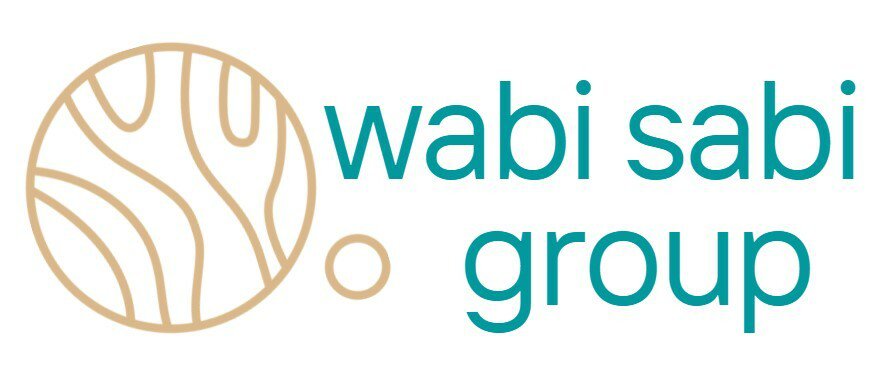
Ice makers are a great way to have a steady supply of ice on hand without having to keep filling up those cheap plastic trays. Unfortunately, they are not immune to dirt and grime, and can even develop mineral scale buildup. The good news is that you don’t have to deal with a dirty ice maker, nor do you have to run out and buy a new appliance. You just need to clean the appliance regularly. But what can you use to clean an ice maker?
There are several things you can use to clean an ice maker, including commercial products designed specially for ice makers. Most people, however, choose other options such as dish soap, vinegar, lemon juice, or baking soda.
Dish soap is the most common option for cleaning ice makers. Most people have it on hand, it is relatively safe compared with other cleaning products, and it’s an affordable option. While it does a good job at cleaning the ice maker’s bin, it cannot always get rid of tough-to-remove problems, such as mineral buildup.
Can You Use Vinegar To Clean Ice Maker?
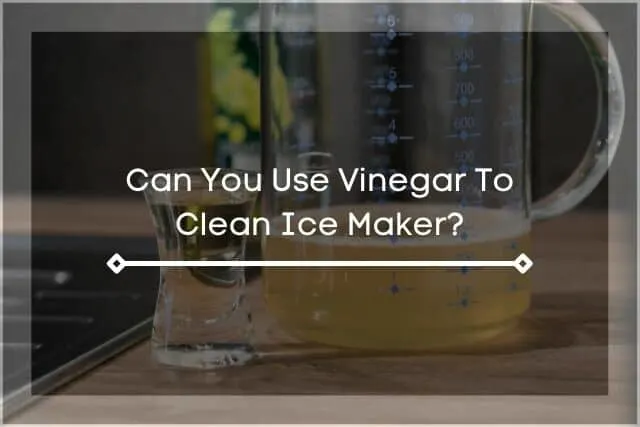
Vinegar is a popular cleaning aid that is naturally acidic, which makes it ideal for removing tough grime and even mineral buildup. It can also help clean your ice maker.
To use vinegar to clean a portable ice maker not attached to a refrigerator, create a mixture of water and vinegar using a ratio of 10 parts water to 1 part vinegar. Pour the mixture into the maker’s water reservoir and then turn on the ice maker. Let it make at least 2 batches of ice, and then discard the ice.
Empty the water reservoir and then clean with warm soapy water. Rinse any soapy water off the reservoir and dry with a towel. Fill the reservoir with fresh water and reattach it to the maker. You can also clean the exterior of the machine with a cloth dampened in vinegar. Vinegar is a natural degreaser and deodorizer. While it does have a pungent aroma when first used, this smell will naturally dissipate as the vinegar dries.
Can You Use Bleach To Clean Ice Maker?
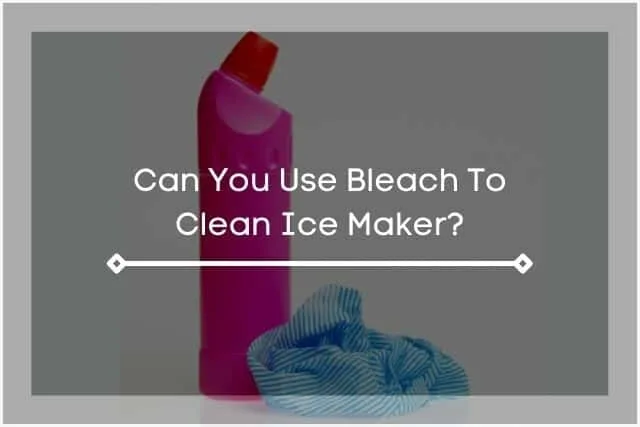
Bleach has long been hailed as a versatile cleaner that whitens and sanitizes. Unfortunately, bleach can also be rather dangerous if not used properly. The good news, however, is that if you take proper caution, you can use bleach to clean your ice maker.
Bleach can also be used to clean an ice maker, though it will need to be diluted with water. Mix 1 gallon of water with 1 tablespoon of bleach. Scrub the exterior of the ice maker with a cloth dampened in the diluted bleach mixture.
You can also clean the removable parts of the ice maker, such as the bin or water reservoir, in the bleach mixture. Make sure, however, to thoroughly rinse the diluted bleach off of any part of the appliance before reattaching it. In addition, always wear protective clothing when using bleach, and only use it in a well-ventilated area.
Keep in mind, however, that bleach is a harsh, toxic chemical that is potentially deadly if consumed. If you do decide to use bleach to clean your ice maker, make sure you give it a thorough rinse to remove any bleach residue left behind.
[This article and its contents are owned by Wabi Sabi Group and was first published on 05/12/2022.]
Can You Use Lemon To Clean Ice Maker?
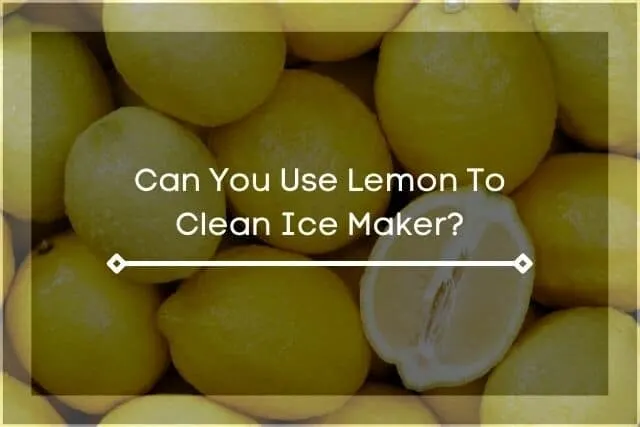
Lemon juice is another naturally acidic item that can help clean various items in your home, such as an ice maker. Like vinegar, it is safer than chemically-filled cleaning products and can help cut through mineral buildup.
Use lemon juice to clean your portable ice maker by first mixing it with water. Mix about 1 part lemon juice with 5 parts water. Pour the diluted lemon juice into the water reservoir and then make a couple of batches of ice. Don’t consume the ice, however, since it will have a lemon-like taste.
Dump out any remaining cleaning solution from the reservoir. Wash the reservoir in warm soapy water, rinse clean, and then dry with a towel. Clean the exterior of the machine with a rag dampened in diluted lemon juice. You can let the diluted lemon juice air dry on the exterior of the machine, or rinse it off with a damp cloth.
Can You Use CLR To Clean Ice Maker?
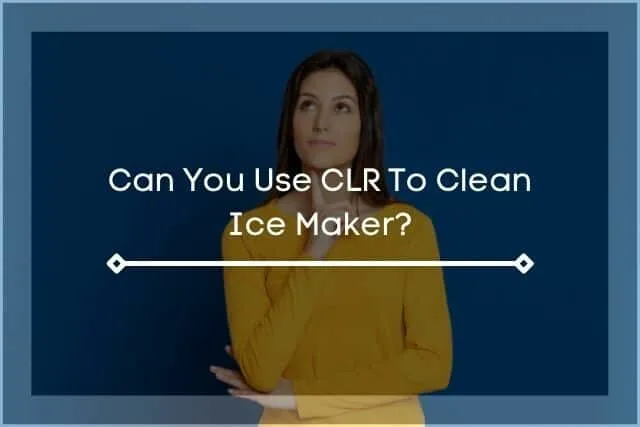
CLR is a popular cleaning product that stands for Calcium, Lime, and Rust. The whole purpose of this product is to get rid of those three hard-to-remove minerals. But can you use CLR to clean ice makers?
It is not recommended to use CLR to clean ice makers, since it can cause damage. If you are unsure what to use to clean your ice maker, refer to your owner’s manual. It will provide you with the manufacturer’s recommended cleaning instructions.
Using a different product than what is recommended in the ice maker’s owner’s manual could void its warranty. Keep that in mind before attempting to clean the appliance. Furthermore, CLR contains toxic ingredients that can be harmful if ingested. This means that any residue that wasn’t thoroughly washed off the ice maker could transfer to the ice you consume. This can cause various health problems, though the most common symptom would be an upset stomach.
Because of the downsides of using CLR to clean your ice maker, it is best to err on the side of caution to choose one of the other safer, non-toxic methods, such as dish soap, lemon juice, vinegar, or baking soda.
[This article and its contents are owned by Wabi Sabi Group and was first published on 05/12/2022.]
Can You Use Baking Soda To Clean Ice Maker?
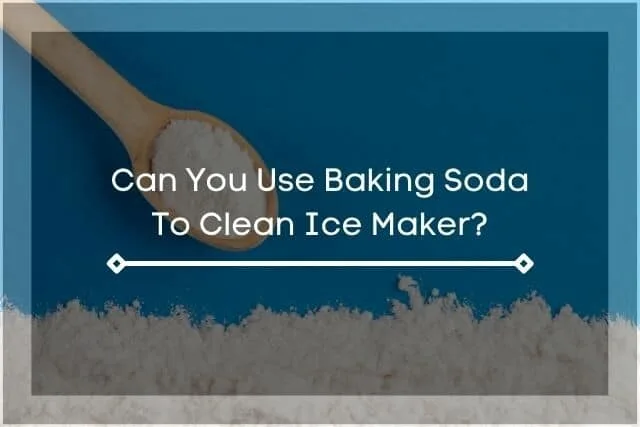
Baking soda is a common sight in pantries all over the United States. It is most often used in baking, but has a long history of boosting laundry, removing odors, and even cleaning. Baking soda can even help clean your ice maker in a safe and non-toxic way.
To use baking soda to clean an ice maker, mix 2 tablespoons of baking soda with warm water until completely dissolved. Add a few drops of mild dish soap and mix. Dampen a cloth in the mixture and wipe the exterior of the ice maker, making sure to scrub any dirt or grime that may be stuck on the surface.
Go back over the exterior surface with a clean cloth dampened with water. This will remove the baking soda residue from the surface. You can also add 2 tablespoons of baking soda to a sink filled with warm soapy water, and then wash the removable parts of the ice maker in the mixture.
Make sure to rinse any parts washed in the baking soda mixture with water before reinstalling or using. While baking soda isn’t harmful even if you consume some, it can leave a gritty texture over any surface it comes in contact with. This isn’t toxic but it can be off putting.
[This article and its contents are owned by Wabi Sabi Group and was first published on 05/12/2022.]
How To Clean Ice Maker Properly
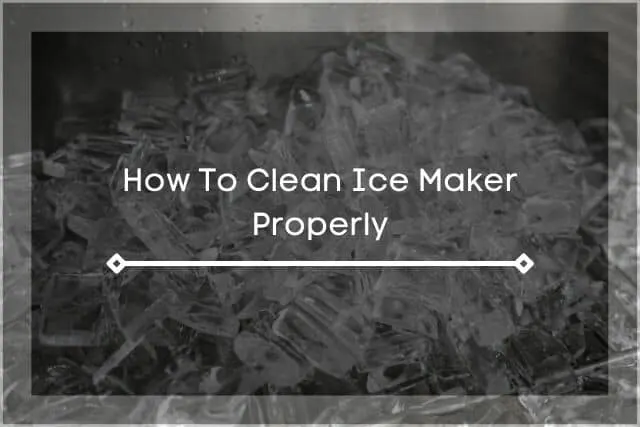
Cleaning an ice maker isn’t hard, and regularly performing a routine cleaning will go a long way to increasing the lifespan of the appliance. However, you will need to make sure you clean the ice maker properly to reap the benefits that it provides.
Cleaning the ice maker properly requires more than just wiping down the ice bin. You will need to drain the unit of water, change the filter, and scrub the bin with warm soapy water.
Before you start the cleaning process, make sure to unplug the refrigerator from the wall outlet. This is a safety precaution that you shouldn’t skip. Once the unit is unplugged, remove the ice bin and discard any ice left in it. Give the bin a good scrubbing with warm soapy water. Once you are satisfied that it is clean, rinse with water and let the bin air dry or wipe dry with a lint free cloth.
Drain the water from the ice maker by removing the drain plug. Make sure to hold a container or bucket under the drain to catch the water. Once all the water has been removed, you can replace the drain plug. Discard the old filter and replace it with a new one, and then reinstall the ice bin. Plug the refrigerator back in and the ice maker will start preparing fresh ice.
This article was first published on May 12, 2022 by Wabi Sabi Group..
It is recommended to thoroughly clean the ice maker every 3 or 4 months, or if the ice starts to smell or taste bad. Doing so ensures the maker is functioning properly for years to come.
Related Articles
What Can You Use to Clean Your Microwave?
Can You Use These to Clean Your Microwave?
What Can You Use to Clean Toaster Oven?
What Can You Use To Clean the Kitchen Cabinet?
WabiSabi Group is the owner of this article and was published on May 12, 2022 and last modified on .
